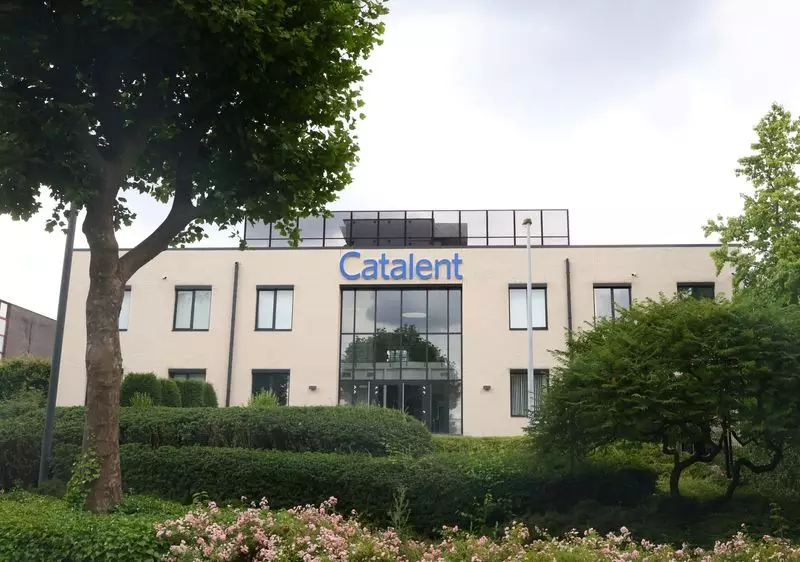The pharmaceutical landscape frequently witnesses mergers and acquisitions that raise questions about market competitiveness and consumer welfare. The proposed acquisition of Catalent, a contract drug manufacturer, by Novo Holdings, a controlling shareholder of Novo Nordisk, is one such instance that has alarmed consumer advocacy groups and labor unions. This critical analysis delves into the potential ramifications of this $16.5 billion deal, exploring not only the concerns raised by various stakeholders but also the broader implications for innovation and access in the pharmaceutical industry.
A coalition comprising the U.S. Public Interest Research Group, the Service Employees International Union (SEIU), and other notable organizations has formally urged the Federal Trade Commission (FTC) to block the acquisition. Their apprehensions revolve around the deal’s potential to stifle competition in the burgeoning market for GLP-1 (glucagon-like peptide-1) drugs, particularly in the context of weight management therapies. These concerns are particularly salient when one considers the overarching market dynamics dominated by Novo’s Wegovy, a leading GLP-1 treatment.
Moreover, U.S. Senator Elizabeth Warren has joined the chorus, pressing the FTC to scrutinize the deal further. Such high-profile dissent highlights the growing unease among consumers and labor advocates about how consolidated power among pharmaceutical giants can curtail future competition, which is vital for driving down drug prices and enhancing healthcare access. This merger may indeed cement Novo’s market position, thereby impeding rivals like Amgen, Roche, and AstraZeneca, who are reportedly working on similar weight-loss therapies.
Concerns regarding this acquisition extend beyond immediate market manipulation. The crux of the argument laid out by critics emphasizes the long-term implications for innovation in pharmaceuticals. Organizations have pointed out that if Novo Holdings gains control over Catalent’s manufacturing capabilities, it could substantially limit the ability of competing companies to advance their own GLP-1 products. This could have cascading effects on not just weight-loss drug development but also potentially on cutting-edge gene therapies.
As highlighted by David Balto, the antitrust lawyer representing these groups, the ramifications of this acquisition ripple throughout the pharmaceutical pipeline. There is a genuine fear that acquiring Catalent could significantly impede access to essential manufacturing resources for rivals, thereby delaying the launch of new therapies that could benefit a wide range of patients. The potential impact reaches into the realm of gene therapy, an area rich with promise but one that is critically reliant on specialized manufacturing capabilities.
Novo Holdings and Catalent: Responses to Criticisms
In the face of growing scrutiny, Novo Holdings has defended the acquisition, asserting that it will enhance not only the capacity to manufacture Wegovy but also the overall competitiveness of the industry. They argue that the transaction is pro-competitive and will yield better outcomes for patients and the local communities that Catalent serves. Similarly, a spokesperson for Catalent has expressed confidence that this acquisition will bolster its capabilities and ultimately benefit customers and patients alike.
However, such reassurances do little to quell the fears of those advocating for consumer interests. Whether or not the transaction will actually foster increased competition is questionable; critics remain skeptical, pointing to the historical trend of mergers leading to reduced choices and higher prices for consumers.
Staying attuned to fundamental market dynamics is crucial when analyzing mergers of this magnitude. The complexities of pharmaceutical development, including the substantial upfront investments and regulatory hurdles, mean that market entrants often rely on established manufacturers for cost-effective production. The FTC’s role is paramount in evaluating whether the consolidation of Catalent under Novo’s umbrella will indeed fortify or threaten future competition.
Furthermore, the market response to this acquisition could be telling. If the deal goes through, it might prompt other pharmaceutical companies to pursue similar strategies of consolidation, thereby creating a domino effect. This potential trend warrants a rationale examination by regulatory bodies, not just in the context of this particular merger but as a broader commentary on the health of competition in the pharmaceutical industry.
The Novo Holdings and Catalent acquisition presents a critical juncture in the pharmaceutical industry, prompting essential questions about competition, innovation, and consumer access to medications. As consumer and labor groups voice valid concerns about the potential monopolistic tendencies of such a merger, regulatory bodies like the FTC must tread carefully to safeguard against the dangers of diminished competition. Ultimately, the stakes extend beyond corporate profits, deeply affecting patient outcomes and the future of healthcare innovation. It is vital for all stakeholders to remain engaged in the discourse surrounding this potential acquisition as the implications of such deals resonate throughout the healthcare system.

